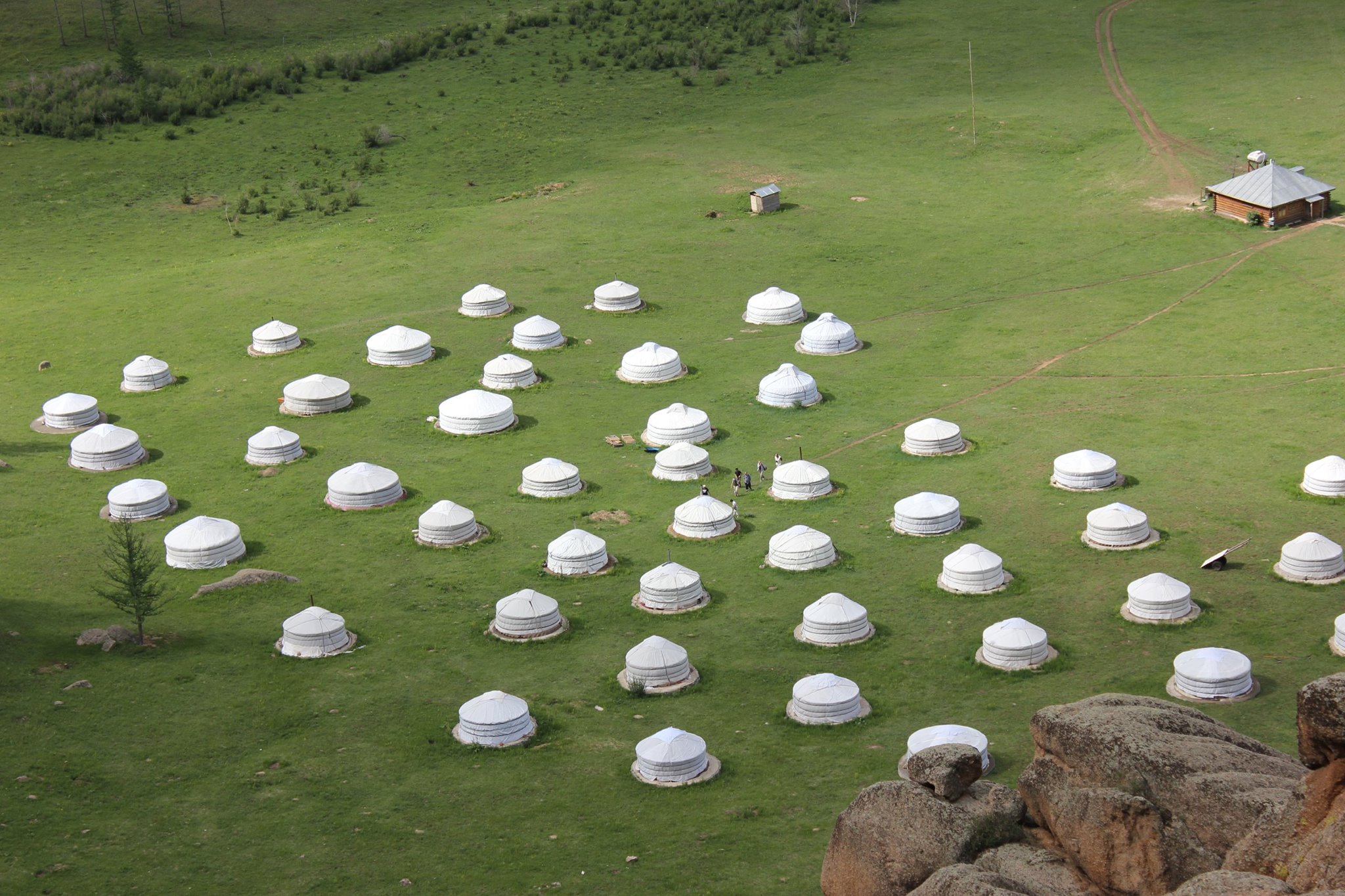Ulaanbaatar
Ulaanbaatar, the capital city, is in the central part of Mongolia on the bank of river Tuul. In 1639, it was founded to as the center of Buddhism in the country, and has since grown to reflect a mix of ancient tradition, Buddhist ritual and modern commerce and trade. It is the undisputed political, economic, and cultural center of Mongolia. The capital is administrated in six districts (Sukhbaatar, Khan-Uul, Chingeltei and Bayangol) and the three satellite towns of Nalaikh, Baga Khangai and Baganuur.
In 2014 Ulaanbaatar's population was estimated 1.250.000.
The history of Ulaanbaatar
The first foundation stone of the future capital of Mongolia dates back to 1639 at a place in present-day Arkhangai aimak. The history of Ulaanbaatar can be divided into two periods, one between 1639 and 1778, when it was moved from one place to another, and the other starting 1778, when it settled in the present site of Ulaanbaatar on the bank of the Tuul river. The first name was Orgoo (Palace) but now the city is called Ulaanbaatar (red hero).
Brief Introduction
The Mongolia lies in the northern part of the Central Asian plateau between the meridian of 87° 44’ and 119° 56’ eastern longitude and in latitudes 52° 09’ and 41° 35’ north. The distance between the country’s westernmost and easternmost points is 2.392 km (1.486.6 miles), and 1.259 km (782.5 miles) between its northernmost and southernmost points. Mongolia, total area is 1.566.500 sq.km (973.586.07 sq. miles) and is the 6-th largest country in Asia and 18-th in the world. Vast nearly 3 times the size France and more than 4 times the United Kingdom. The Mongolia borders on the Russian Federation and the China. The 8,158 km (5.070 mile) state border passes exclusively through land. To the north, Mongolia borders on the Russian federation along a 3.485 km (2.165.9 mile) line, and it has 4.673 km (2.904.3 mile) long common border with the China in the south. Mongolia is a country with a remarkable variety of natural contrasts. Eternally snow-capped mountain masses, rising high above sea-level, neighbor with vast hilly Plains covered with highland plants and marshy coniferous forests and deserts and semi-deserts and numerous clear-water lakes with solonchaks. Mongolia has an average altitude of 1.580 m (5.185.9 feet) above sea level. The highest point is the Khuiten peak (4.653 m or 15.272.4 feet) in the Tavan Bogd mountain range at a point where the state borders of the Mongolia the Russian and the China meet. The lowest point is the Hoh Nuur (Blue lake), lying at an altitude of 532 m (1.746 feet) above sea level.The territory of Mongolia is in three time-zones-the sixth, seventh and eighth, starting from the prime meridian of 0° . As of February 2014, the population of the country was 2.900.000. The country is divided into 21 administrative territorial units - aimag, including 3 big cities Darkhan, Erdenet, and Choir. The capital of Mongolia is Ulaanbaatar.
Gandan Monastery
The monastery was constructed by order of the 5th Jebtsundamba Khutuktu in 1809. The first temple was the Gungaachoilin Datsan. Only one wooden pillar remains from this temple. In 1838, the Gandantegchenlin Temple was built along with the private residence of the Jebtsundamba Khutuktu. The 13th Dalai Lama stayed in the residence in 1904. In 1840, the Vajradhara Temple was built. In 1869, the Zuu Temple was built. In 1913, the tall Avalokiteśvara temple was built. In 1925, the temple for keeping the remains of the 8th Jebtsundamba Khutuktu was built. It is now the monastery library.
In the 1930s, the Communist government of Mongolia, under the leadership of Khorloogiin Choibalsan and under the influence of Joseph Stalin, destroyed all but a few monasteries and killed more than 15,000 lamas.
Gandantegchinlen Khiid monastery, having escaped this mass destruction, was closed in 1938, but then reopened in 1944 and was allowed to continue as the only functioning Buddhist monastery, under a skeleton staff, as a token homage to traditional Mongolian culture and religion. With the end of Marxism in Mongolia in 1990, restrictions on worship were lifted.a







